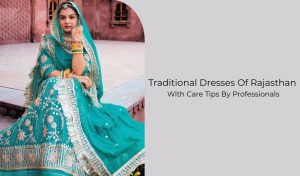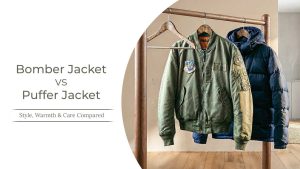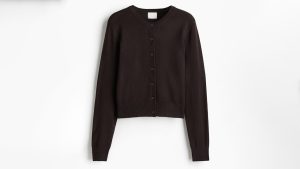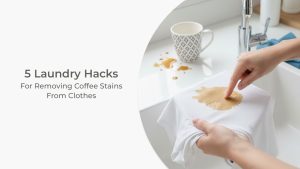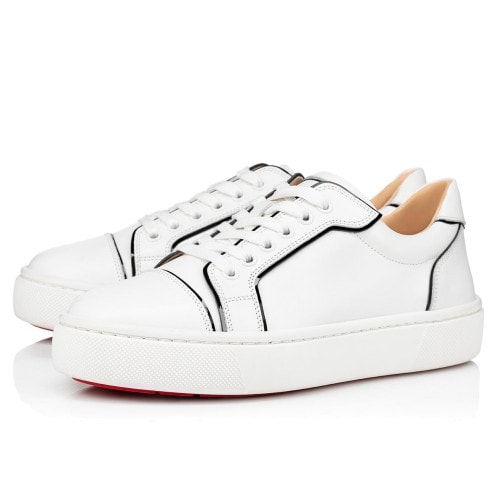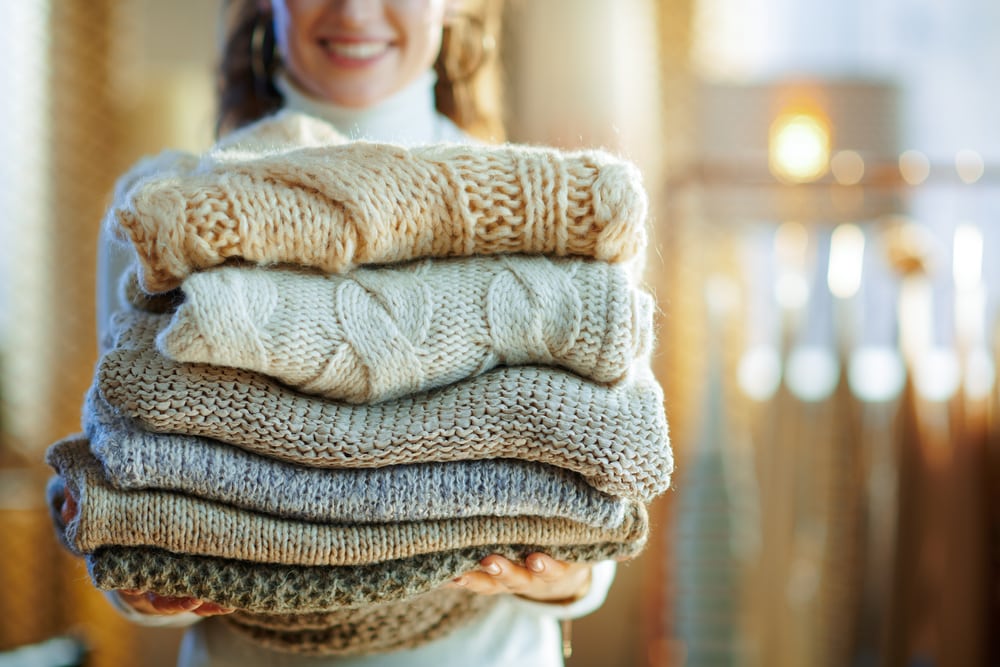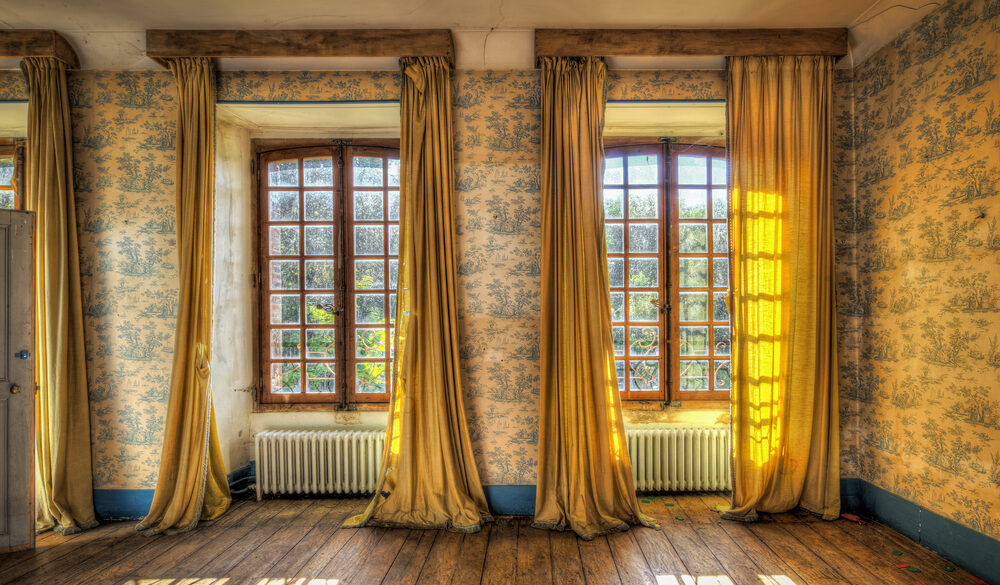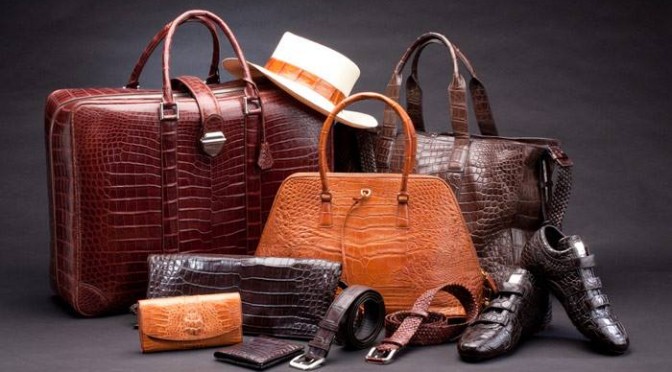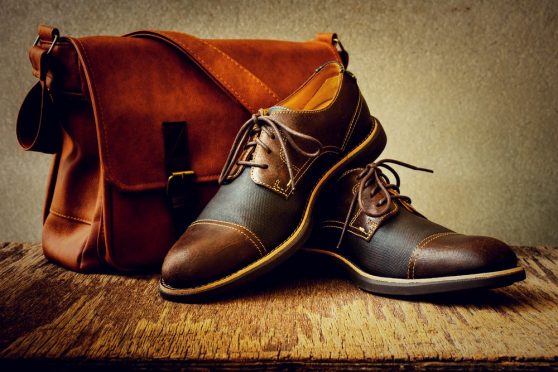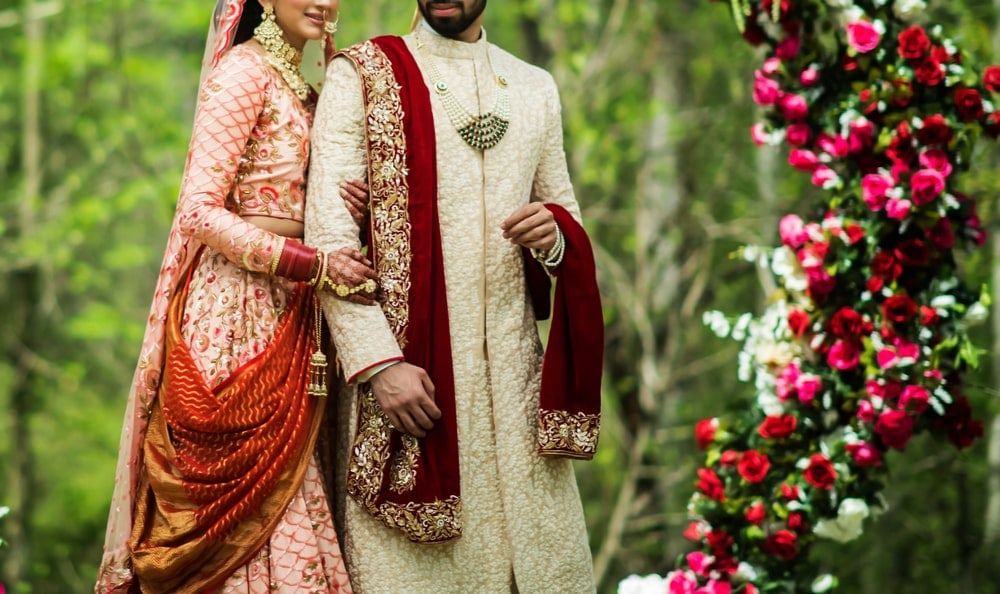In winters, men also get worried about their...
Read More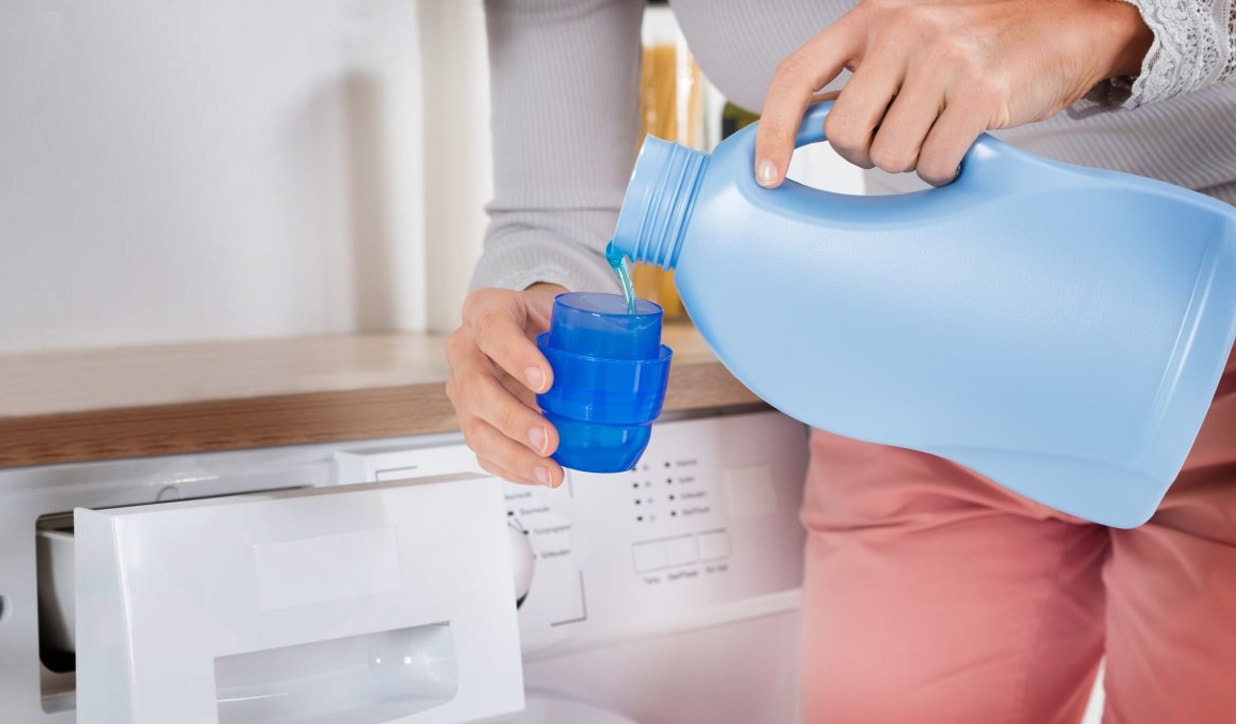
Table of Contents
People often advise using bleach in laundry for whitening and brightening clothes.
If you want to use bleach in laundry too, but you have never used it before, we are here to help. In this article, we have explained everything you need to know about bleaching clothes.
What Is Bleach?
Bleach is a term used for any chemical product that can clean, remove stains or remove the colour from a surface. It is used domestically as well as industrially. In general, bleaches have antibacterial properties.
Here are some main uses of bleach:
- It helps in removing mould and mildew.
- People use bleach in laundry to remove stains.
- It also helps in whitening and brightening clothes in laundry.
- It is used to disinfect surfaces, especially in the bathroom and kitchen in common households.
- It is used in hospitals and clinics to disinfect bedding and other surfaces.
- Bleach (chlorine bleach) is used for swimming pool sanitization. It keeps the water clean by controlling bacteria, viruses and algae.
- Small quantities of bleach are used even in household water supplies to get rid of harmful organisms.
We hope you understand bleach is a commonly used multipurpose product. Now, we will see how you can use it to wash clothes properly. But before that, you must know the types of bleach used in laundry.
Powder or Liquid Bleach
Bleach is found in both powder and liquid form. Powdered oxygen bleach stays in a good condition for a longer period than liquid bleach. It can withstand exposure to air as well. On the other hand, liquid bleach is easier to use and store.
Different Types Of Bleach To Use In Laundry
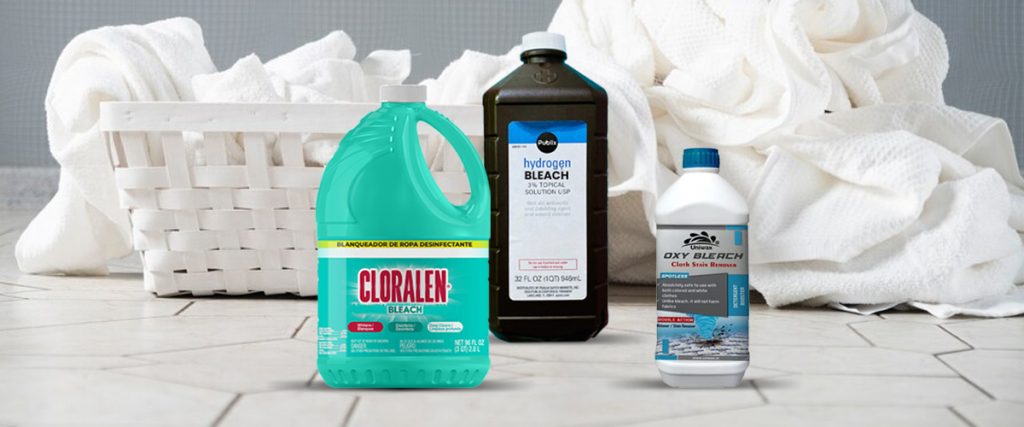
Household and industrial bleaches are based on three diverse chemical components listed below:
- Chlorine-based bleaches (Contains Oxidizing Agent)
- Peroxide-based bleaches (Contains Oxidizing Agent)
- Sulfur dioxide-based bleach (Contains Reducing Agent)
Some bleaches have oxidizing agents while some have reducing agents. It is not recommended to use bleach with a reducing agent at home as it is quite harsh and requires expertise to handle.
We will discuss only oxidizing bleaches here because they are used in laundry at home. They are: chlorine-based (Chlorine bleach) and peroxide-based bleaches.
They are also categorized into two divisions: Chlorine bleach & Non-chlorine bleach.
Bleach that contains chlorine (which is a powerful oxidizer) is commonly known as ‘Chlorine Bleach’. Whereas, bleaches that have other oxidizing agents such as hydrogen peroxide, sodium percarbonate, and sodium perborate, are called ‘Oxygen Bleach’ or ‘Non-chlorine bleach’.
Worried about stains?
Try India’s No. 1 Dry Cleaning!
Chlorine Bleach (Sodium Hypochlorite)
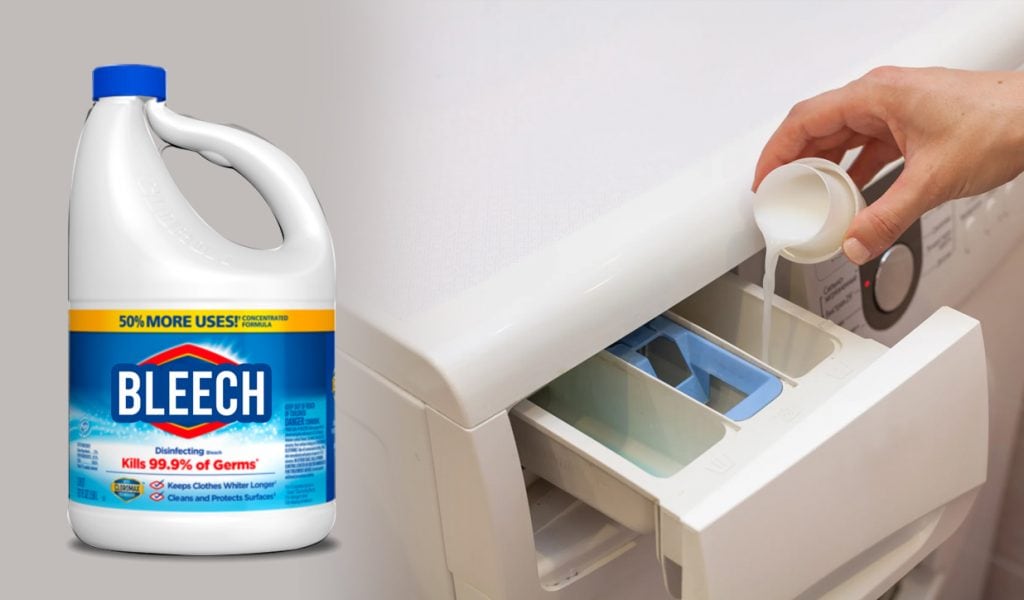
One of the most powerful household bleach. It is a 5.25 per cent solution of sodium hypochlorite. It is a strong bleaching agent that is used as a disinfectant. You can easily find brands like Clorox, etc. at your nearest retail stores or online as well. Chlorine bleach comes in both powder and liquid form.
Here are some main uses of chlorine bleach in laundry:
- Helps in removing some stains
- Helps in whitening white clothes
- Helps in disinfecting laundry
Pro-tip: Use fresh chlorine bleach
While purchasing chlorine bleach check its manufacturing date. It is better to look for a recently-packed packet or bottle. Because chlorine bleach loses its effectiveness with time. Especially, when it comes in contact with light and air, it starts losing its effectiveness rapidly. So, if it’s already been six months, you should replace bleach as it may not bring any difference in laundry.
When you should not use chlorine bleach in laundry
Chlorine bleach can weaken the fibres of some fabrics and damage the garment. So, if you have to wash the following fabrics, you should never use chlorine bleach in laundry:
- Flame-resistant clothes
- Wool
- Wool blends
- Silk
- Acetate
- Spandex
- Rubber (Clothes having rubber print or rubber element)
- Polypropylene foam
We do not recommend using chlorine bleach for coloured clothes as it will cause discolouring.
Oxygen Bleach
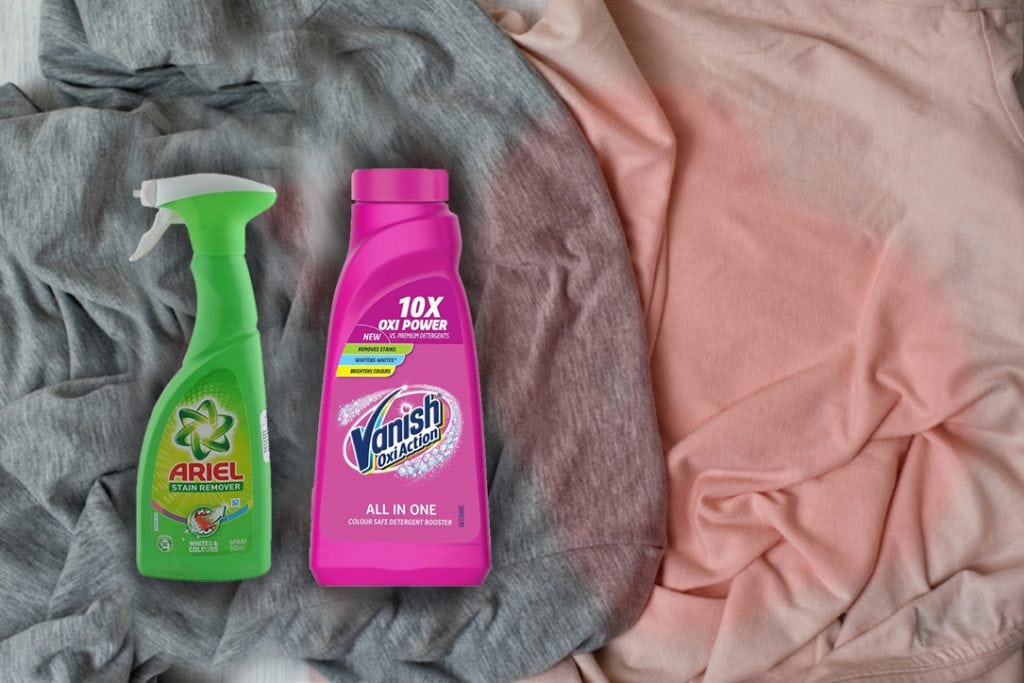
Oxygen bleach is a non-chlorinated bleach. It is commonly known as oxy bleach. You can consider it as an “all-fabric bleach” because it is safe for most washable fabrics and colours as it is not as harsh as chlorine bleach. You should not expect quick results as oxy bleach takes time to work. It does not have any anti-bacterial properties. Hence, it cannot be used as a disinfectant. However, it can definitely brighten your coloured clothes and remove some stains.
As explained above, any bleach that contains oxidizing agents from other chlorine is termed ‘Oxy Bleach’ or ‘Oxy Bleach’. The oxidizing agent can be any of the following:
- Hydrogen peroxide
- Sodium percarbonate
- Sodium perborate
In general, you will find oxy bleach containing sodium percarbonate or sodium perborate in retail stores. In many areas, it is the only variant which people sell in the name of Oxygen bleach. Detergent additives like Vanish, Oxi Clean, Oxi Brite, etc. that comes to whiten whites also contain sodium percarbonate.
As far as hydrogen peroxide is concerned, it is usually sold at pharmacy stores as a ‘first-aid disinfectant’. This means, if you want to use sodium percarbonate or sodium perborate, you can go to your nearest retail store and ask for ‘Oxy bleach’. You can also search ‘Oxy bleach’ on Amazon, Flipkart, etc. On the other hand, if you need hydrogen peroxide, you will have to make it clear to the seller by the exact name. There are high chances you will find hydrogen peroxide only at pharmacy stores or online.
Premium Laundry Service – 48-hour delivery!
Here are some main uses of Oxybleach (Containing Sodium percarbonate or sodium perborate) in laundry:
- Helps in removing some stains from clothes, carpets and upholstery
- Helping in whitening both white and coloured clothes
- Enhances the cleaning ability of detergent
When you should not use oxy bleach in laundry
In spite of being a mild chemical agent, it is still a bleach. Hence, you should not use it on extremely delicate fabrics as their fibres are at high risk of damage. Some of the fibres are:
- Silk
- Wool
- Leather
Now, let’s know hydrogen peroxide a little more:
Hydrogen Peroxide
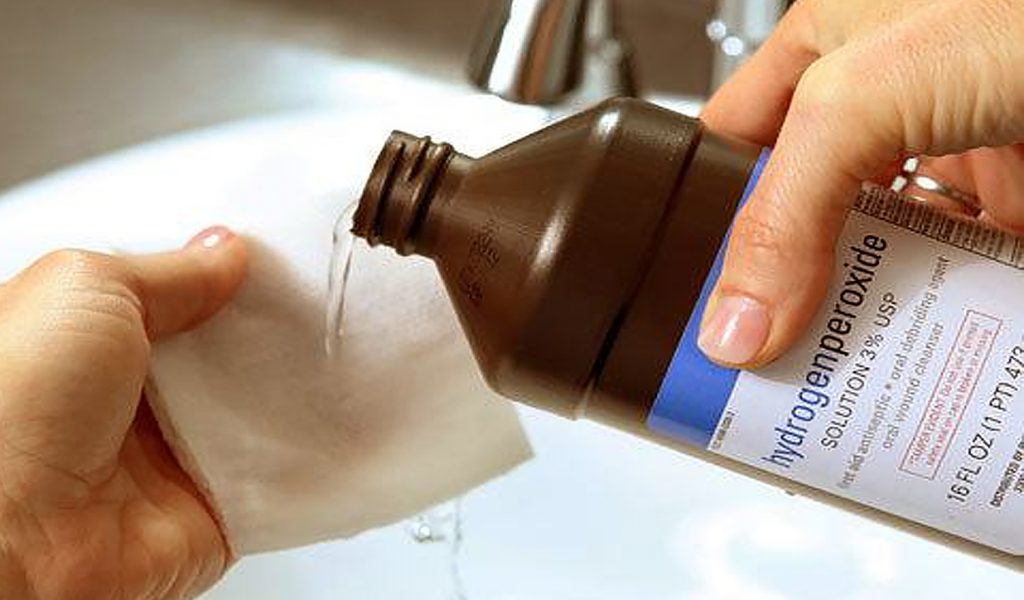
Hydrogen peroxide is an oxidizing agent which can be used as a bleach in laundry. You can easily find a 3% solution of hydrogen peroxide (which is ideal to use in laundry) at drug stores or pharmacies near you. It is generally used as a first-aid disinfectant.
Here are the main uses of hydrogen peroxide in laundry:
- Helps in removing stains from clothes
- Helps in removing odour from clothes
- Helps in brightening both white and coloured clothes
- Helps in cleaning and disinfecting the washer
Pro-tip: Use a fresh hydrogen peroxide
Just like chlorine bleach, hydrogen peroxide also loses its effectiveness with time. So, you should use freshly-manufactured bleach to get the best results. If you already have it at home, test if it’s still effective or not. You can pour a small amount of hydrogen peroxide into a cup. If it fizzes then it’s good to use, otherwise, it will not give you the desired results.
When you should not use hydrogen peroxide in laundry
Even though hydrogen peroxide is safe to use on washable clothes, it can be harsh on some synthetic fabrics as it may not react well and cause a yellow tinge or stain. Some of those synthetic fibres include:
- Acetate
- Spandex
- Rubber (Clothes having rubber print or rubber element)
- Polypropylene foam
- Nylon
- Acrylics,
- Polyurethane
Things To Do Before Using Bleach In Laundry
We will see how to use all three types of bleach in laundry one by one. However, there are two common things that you must do while using any of them:
Dilute: Always dilute bleach with water. Never directly use it on the fabric as it can completely fade the colour of a coloured garment as well as damage the fibres of delicate fabric.
Patch test: Always carry out a patch before using bleach on any garment. Mix 1 teaspoon of bleach with 2 teaspoons of warm water. Dip a cotton swab in this mixture and apply it gently on the fabric. You can apply bleach to an inconspicuous area of your garments such as the insides of the collar or inseam hem. Leave it to rest for 5-10 minutes. In case you spot anything unusual such as colour bleeding, colour fading or irritation in the fabric, it is not safe to use bleach.
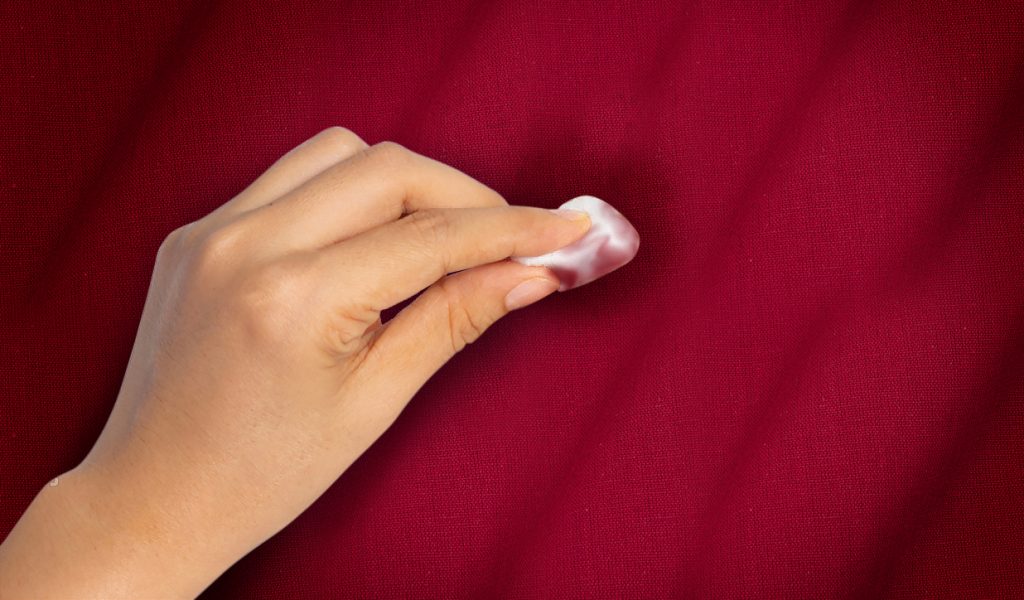
Want new-like shoes?
Try India’s Best Shoe Cleaning!
Check garment care label: Manufacturers often give clear instructions on the garment care label. Read it carefully to check if the fabric can be bleached or not. If the garment care label says “do not bleach”, then you must not use bleach otherwise the garment will get damaged.
Pro-tip: Use hot water if the garments care label allows because bleach works better in hot water.
Sort laundry: Sort your laundry load as per the garment care label first. Separate all bleach-sensitive clothes from the clothes that can tolerate bleach. Next up, separate white clothes from coloured clothes. Because you cannot use chlorine bleach in laundry if you have coloured clothes in the load.
Caution: Never use ammonia and bleach together in laundry, the reaction may cause irreversible damage to your clothes. It will also release toxic gas which may cause minor health issues.
How To Use Bleach In Laundry
Machine Wash
Fully Automatic Machines
Generally, such machines do not have separate dispensers, so you will have to add bleach manually. Here is how to use bleach in laundry if you have a fully-automatic machine:
- Fill the empty washer drum with water. Oxy bleach can be added to hot water as well. So, if your clothes tolerate hot water, you can add that too.
- Add a lesser quantity of detergent than usual when the washer is half full of water. Because oxy bleach is a detergent booster.
- Add ½ cup of oxy bleach to the water.
- Put your clothes inside the washer drum. Don’t overload because clothes should circulate easily.
- Run the wash cycle as usual.
Semi Automatic Machines
The dispensers of such machines add additives like bleach automatically when there is enough water for the bleach to get diluted. Here is what you should do:
- Add bleach to the bleach dispenser as per the quantities mentioned above.
- Add detergent in the usual quantity in the specific dispenser. Oxy bleach will increase the efficiency of detergent so you can use lesser detergent than usual.
- Place the garments in the washer. Do not overload the washer as clothes need to move freely inside.
- Run the wash cycle as usual.
Hand Wash
To whiten clothes, clean soil or pre-treat stains, take a 10-litre bucket. Fill it with cool water and add bleach. Soak the garment for 5 minutes. Take it out, and give it a rinse in cool water. Thereafter, launder as usual.
If you want to disinfect clothes, just let them soak in the same solution for 10 minutes instead of 5 minutes.
Note: Oxy bleach cannot disinfect clothes.
In case, a garment is heavily embellished, carries delicate embroidery or special elements like leather patches, etc. you should not handle them at home. Because such elements may get damaged due to bleach in some cases. If you want to brighten such clothes or remove stubborn stains from such clothes, rely on experts. Visit a professional laundry service provider as they know how to know the intricacies of laundry. They process all sorts of garments carefully. Hence, you will get desired cleaning results, without the risk of damage.
Stain removal using bleach
You can use any of the three types of bleach, depending on the garment care label and other fabric.
The process is simple and easy. You need to dilute the suitable bleach in cool or lukewarm water. Take 1 teaspoon of bleach and mix it with 2 teaspoons of water. Now dip a clean white cloth into the diluted bleach and dab it gently on the stained area. Keep dabbing until the stain is gone. Afterwards, wash the garment as usual.
Also Read: Best Guide To Choose Right Stain Removers
Ironing And Storing Bleached Clothes
Ironing clothes after using bleach in laundry
Freshly bleached clothes need a little aftercare as well. Because high heat from an iron can leave a yellowish hue on the bleached areas. It can scorch the bleached area of the garment as well. Hence, you should flip the garment inside out. Iron it with the help of a press cloth or prefer a lesser hot iron setting as per the fabric.
Storing clothes after using bleach in laundry
While folding, hanging or storing bleached clothes, make sure that you don’t have excessive lotion, oil, soap or water in your hands. These things should not transfer to the garment as it may turn yellowish or get yellow stains. Next, store such garments in a cool, dry place.
Get your clothes clean & delivered in just 48 hours!
Frequently asked questions about using bleach in laundry
There is no hard and fast rule regarding the frequency of using bleach in laundry. However, you should be careful that you not overusing bleach especially harsh bleach like chlorine bleach. Excessive use of harsh bleach can weaken cotton, linen and some other fabrics. It can also cause strip off the outer fibres in synthetic white fabrics and reveals a yellow inner core. It results in the yellowing of white fabrics.
We recommend using bleach for whitening and brightening only when you feel it necessary. For example, if your white clothing has turned pale yellowish you can use bleach.
No! Never use bleach full strength to treat any soft or hard surface. Bleach should always be diluted with water before it contacts fabric. Bleach dispensers do this automatically, you can do this yourself by adding the bleach to the water in a standard washer as it’s filling before you add the clothes.
To pre-treat stains before washing with bleach, use a ratio of ¼ cup bleach to 1 gallon of water, and make sure you soak the entire item for up to 5 minutes before machine washing.
We recommend only non-fragranced bleach products to sanitize laundry.
Yes, you can slightly increase the quantity in case of heavily dirty laundry. Just make sure you do not overfill the dispenser or double up the quantity.
Yes, you can add 2 cups of hydrogen peroxide to the empty washer. Then, run a hot water wash cycle. It will remove the stinky smell from your washer.
Disclaimer: The opinions expressed in this article are those of the author. They do not necessarily purport to reflect the values or views of Tumbledry.
How To Find The Best Dry Cleaners In
Dry cleaning our clothes have been an important...
Read MoreHow to Choose the Best Winter Suit for
Winter suit for women have plenty of variety...
Read MoreHow to Maintain Winter Sweaters: Dos & Don’ts
Wool sweaters are among the necessities for winters....
Read MoreTraditional Dresses Of Rajasthan For Men & Women:
When it comes to best traditional dresses in...
Read MoreBest Winter Jackets For Men: Style, Warmth &
In winters, jackets for men are significant parts...
Read MoreBomber Jacket vs. Puffer Jacket: Style, Warmth &
Bomber or Puffer, both types of jackets have...
Read MoreBest Winter Wear For Women & How to
Winter wardrobes need much care and expert tips...
Read MoreBest Cardigan Sweater For Women To Style In
In winters, there are limited options to style...
Read More5 Laundry Hacks for Removing Coffee Stains From
Many people end up losing their favorite garment...
Read More




